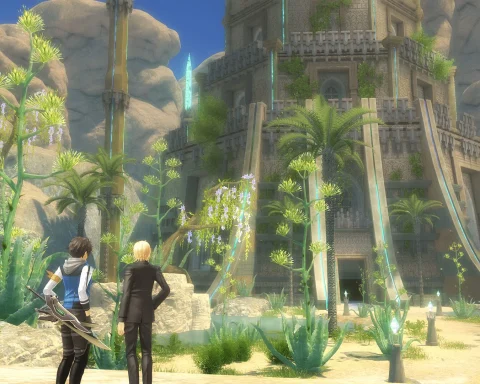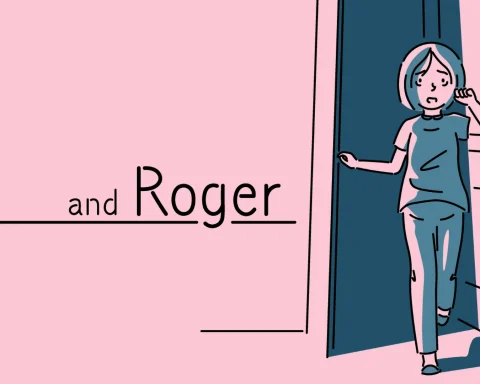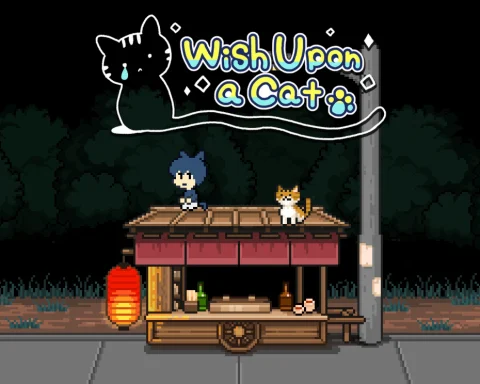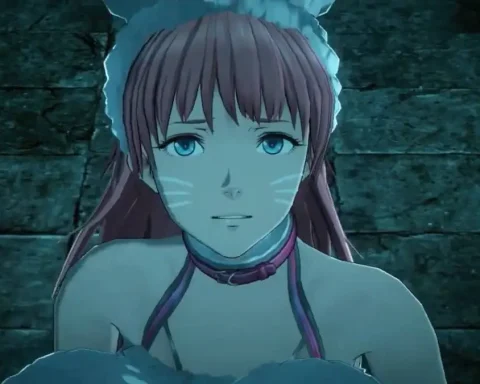Dungeon Encounters is quirky and different enough that it’s easy to overlook or put to the side. Square Enix almost forgot it was even making it, announcing it at TGS about a month from release. I joke (I’m sure the timing of the announcement was deliberate), but I can also imagine some PR agent looking at the release schedule a few days before TGS and going “uh, team, did we actually announce this one?” Anyhow! Announce and release they did, and in between everything else I’ve been playing, I’ve also been plugging along at this one. It’s actually quite the delight, but you need to have a very specific history with RPGs to really appreciate it.
By that I mean you need to have familiarity with first edition Dungeons & Dragons and modules like “Dungeon Module B1: In Search of the Unknown” (if you don’t know what that’s referring to, that’s fine, but if you do, hello fellow oldie!). You’ve got to have a real love for a time where RPG meant “grid paper mapping square by square, and rolling dice to battle imaginary enemies.” The early era of Dungeons & Dragons actively discouraged people from using miniatures and maps on the board. And then board games like Hero Quest came along, gave us the map, and then did away with the idea of storytelling entirely. Dungeon Encounters belongs to an amalgamation of these traditions, and it’s a delight.
The game plays out on crossword-like boards. You form a party of heroes, and then try and fill in as many of the “squares” on the board as possible before moving on to the next dungeon floor. Because you get a bonus for filling the board in entirely, it’s in your best interest to do so, but you can also move up and down dungeon levels at will, so if you miss something, you can always come back. Early dungeon levels have a tiny few squares, but later ones are epic beasts to explore.
As you wander, you’ll run over numbers. Numbers that are printed in white are “friendly” and are shops, rest spots, or perhaps information panels on how to defeat a particular enemy. Numbers printed in black are the enemies, and take you to a turn-based combat system, using ATB bars reminiscent of the SNES-era Final Fantasy titles. In terms of visuals, all you see is a small portrait of an enemy (though they are often super-cute), and there’s very little animation as they go about their business attacking you. In terms of gameplay… well, it’s almost as simple. Every character has two “defence” statistics – one for physical damage and the other for magic. Once one of those defences has been reduced to zero you can start dealing direct damage to the enemy’s health, while they’re trying to do the same to you. Once the health itself hits zero, it’s a knock-out. Each character in your party can carry one weapon and one magic-dealing ability, so the trick is to have a good mix of the two so that you can dispatch enemies with high physical defence as easily as you can tackle those with high magical resistance.
Incredibly, that’s all there is to the game… except that’s paradoxically also not the case at all. For example, when you start the adventure and form your first party, you’ll see that most of the heroes are greyed out. At first, I wondered if that was because I was playing online and the game was showing me a selection of other player’s parties. No. Soon enough you learn that those are heroes in your world, waiting for you to rescue or help them out, and each of them has a specific co-ordinate to note down in order to encounter them. The co-ordinates told you their position on the map. So, soon after I started playing I was also finding myself writing things done on notepaper… just as I used to do with the old SSI Dungeons & Dragons games! The nostalgia was hitting me in waves. Thanks to the generally high difficulty of the game, you need to make sure that you’ve got rescue parties in reserve and backup parties for your backups. That requires some strategic thinking. And, because there are all kinds of secrets and hidden passageways along the way, you will need to make notes of those locations to return to once you’ve got the right abilities to make the path clear. Thanks to all of this, I have a booklet of notes for this game. You have no idea how much that tapped into the joy of me as an eight-year-old pouring over that B1 Dungeon module and memorising the grid paper map and imagining the scene that the text was setting.
There’s next to no explicit narrative in Dungeon Encounters, but there is a lot of emergent narrative. With such a blank slate to work with, you fill it with your own memories of your character’s exploits. Sure, there’s no half-hour long cut scene where two characters teach one another how to fake laugh to make the pain of the adventure go away, but on the other hand you’ll clearly remember that battle on floor four where one hero on the verge of death managed to save an otherwise destroyed party with a lucky hit on a hulking black bear. This game understands better than any that the more it limits itself to providing a framework, the more people will fill it with their own stories. To bring it back to that wonderful B1 module again, all that adventure did was give you a map and a booklet with blank spaces to fill out monster encounters. Dungeons & Dragons adventures now spell everything out to the depth Hideo Kojima himself does, and while they’re hugely entertaining, you do lose the ability to allow your own imagination guide the experience.
With all of this said I have only played Dungeon Encounters in short bursts. For lack of a better term it is a grind, and while that’s intentional, I’ve found the best way to experience it is with a coffee in the morning, or for a short session before bed. In other words, it’s one of those “unwind” experiences, like a crossword or a book. It’s intellectually engaging and stimulating, and uncomplicated in its approach, meaning that you can pick it up without needing to worry about spending time “getting into it” or learning new things. From the opening seconds you’re playing the game in full, and it’s designed in such a way as to be as pick-up-and-play or marathon session as you might like it to be. The downside to this is that I’ve completed fewer crosswords these past few weeks…
Dungeon Encounters is deceptive engaging. What seems at first to be a no-frills dungeon crawler, sliced back to its very minimum eventually reveals itself to be quite the clever little project. It provides the very basic foundation needed for a JRPG, and then gets out of the way, letting the player write their own story and fill in the metaphoric (and literal) blanks in their own way. That makes it an oddly cathartic experience.
– Matt S.
Editor-in-Chief
Find me on Twitter: @mattsainsb









